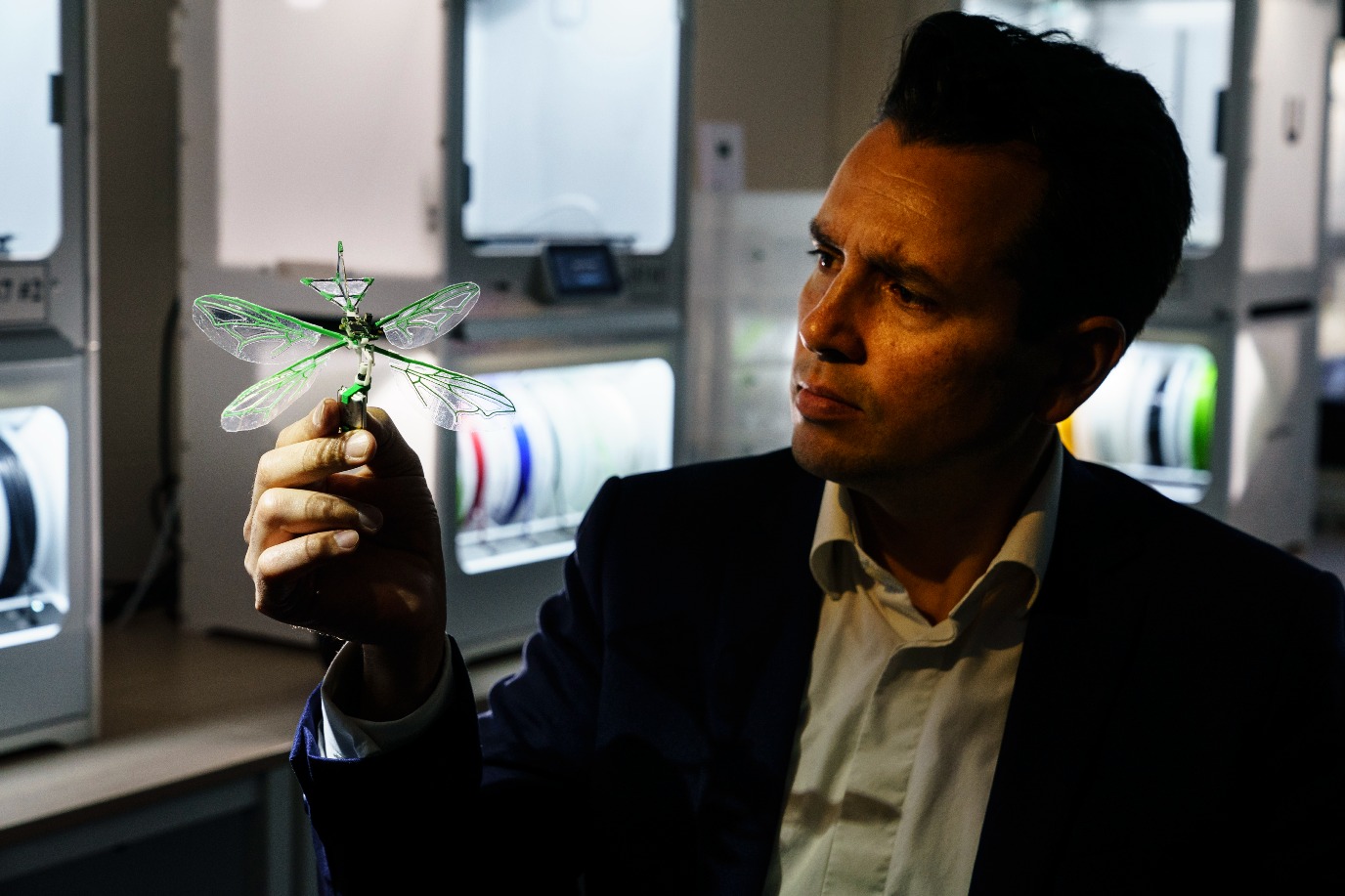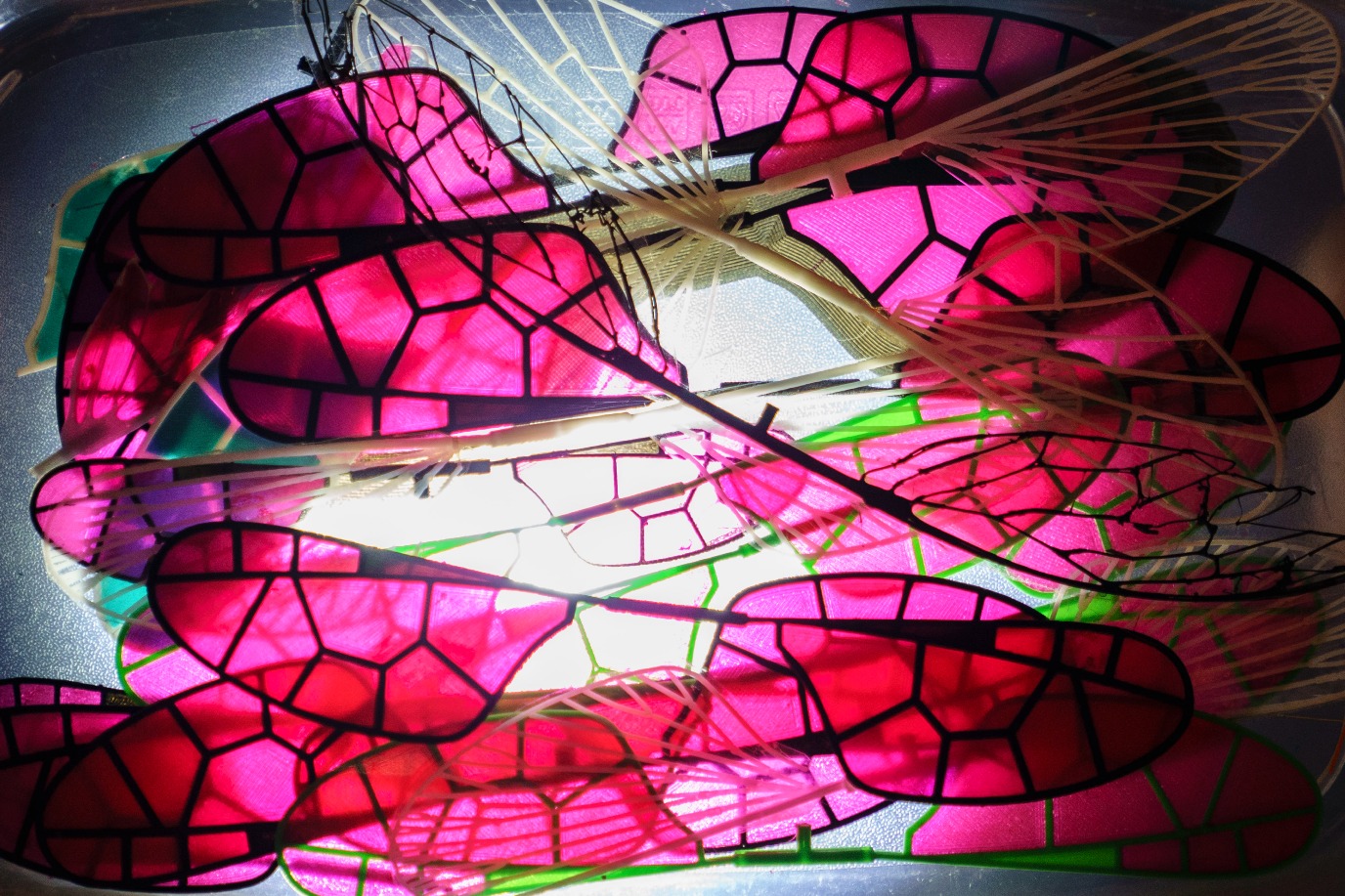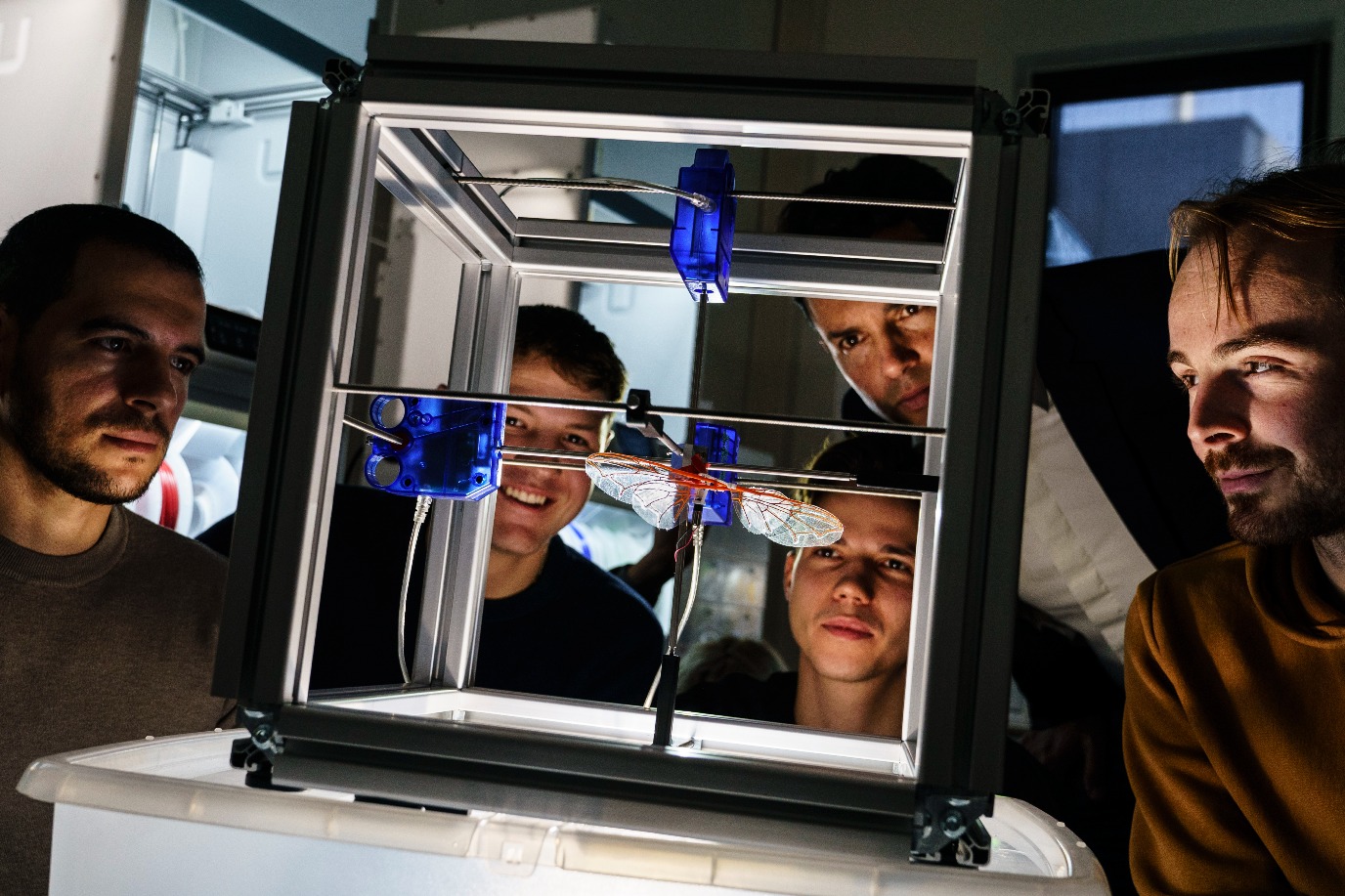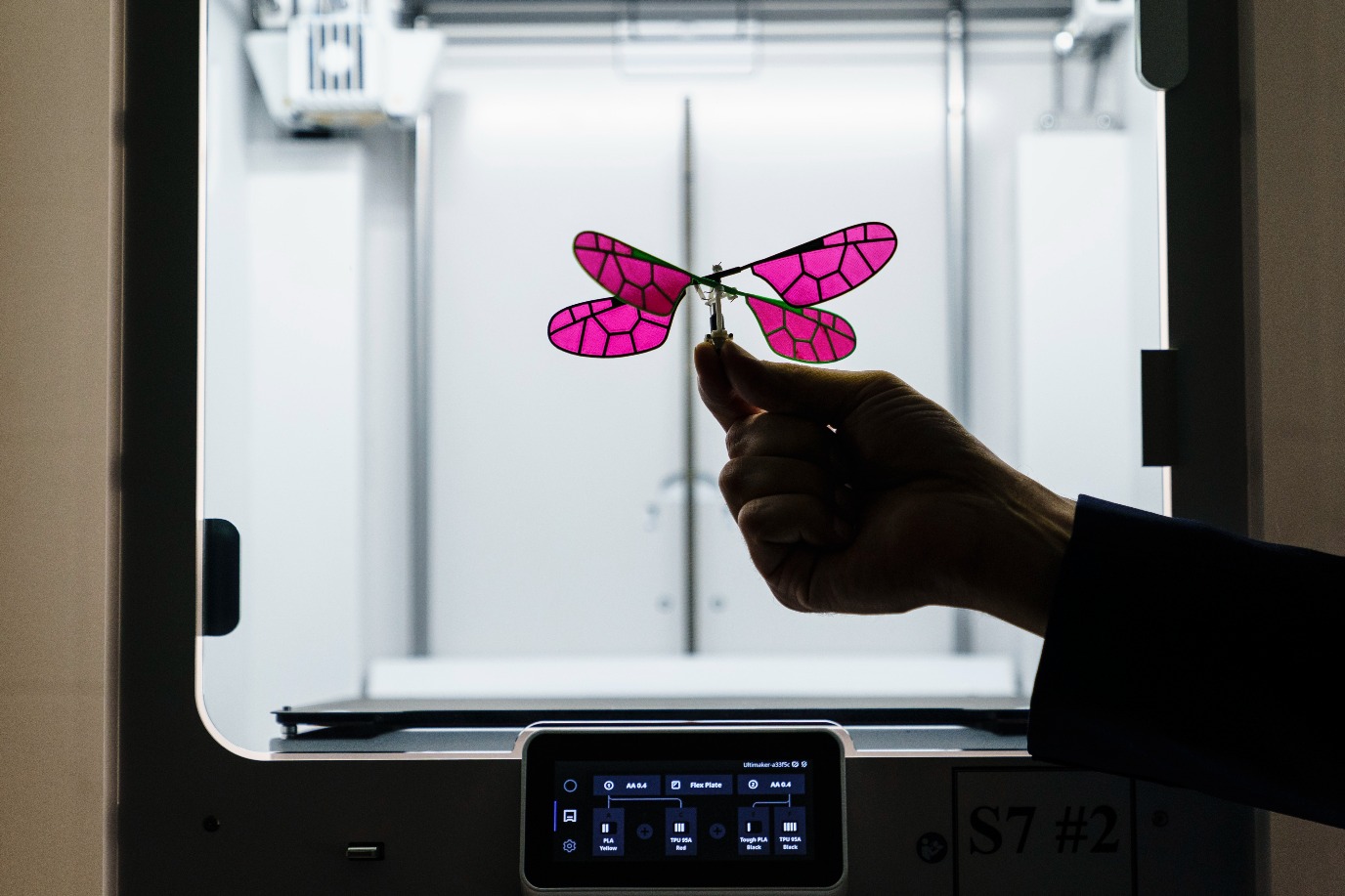Efficiënt als een huisvlieg
‘In de natuur gebeurt vliegen vaak met flappende bewegingen,’ vertelt Mauricio Muñoz Arias, universitair docent Autonome Systemen. ‘Ik heb het gevoel dat flappen uiteindelijk efficiënter zal zijn dan de draaiende beweging die de meeste drones maken.’ Samen met zijn studenten ontwikkelde Muñoz Arias dit vederlichte apparaatje dat als een insect flapt met zijn vleugels: een ornithopter. Het apparaatje kan een voorgeprogrammeerd traject vliegen, en is op afstand bestuurbaar via een laptop.




Deze kleine ornithopter weegt slechts negen gram, maar heeft genoeg liftkracht om nog eens zes gram mee te torsen. ‘Je zou het bijvoorbeeld kunnen gebruiken om medicijnen te brengen naar moeilijk bereikbare plaatsen, ten tijde van een natuurramp,’ vertelt Muñoz Arias, ‘of je kunt hem uitrusten met een camera en gewassen laten inspecteren voor de landbouwindustrie.’
Het project begon voor Muñoz Arias echter met een heel andere motivatie: hij wilde studenten van technische opleidingen meer met hun handen laten werken. Dus gaf hij ze een setje met 3D-geprinte onderdelen, die ze zelf in elkaar moesten zetten en laten vliegen. Ze hielden wedstrijden, en de ornithopter met de beste liftkracht won.
De wedstrijden trokken de aandacht van studenten, en illustreerden bovendien de mogelijkheden van de ornithopter. Zo werd het project geleidelijk een onderzoeksonderneming. De zoektocht naar betere efficiëntie en een beter vleugelontwerp leidde tot een hele reeks bachelor- en masterscripties. Muñoz Arias: ‘We hebben de vleugels van een gewone huisvlieg getest, van een cicade, een nachtvlinder en een bij. De vleugel van de vlieg was veruit het efficiëntst in termen van benodigde energie en gegenereerde liftkracht.’
Het resultaat is een ‘beestje’ dat uniek is in zijn soort: er zijn wel ornithopters ontwikkeld aan Harvard en aan de Konkuk University in Zuid-Korea, maar die zijn allemaal in een heel andere gewichtsklasse. ‘En dat allemaal dankzij het feit dat er zoveel studenten een handje kwamen helpen,’ vertelt Muñoz Arias. ‘Ze komen altijd weer met verse ideeën!’
Tekst: FSE Science Newsroom | Charlotte Vlek
Foto’s: Reyer Boxem
In Makers van de RUG belichten we elke twee weken een onderzoeker die iets concreets heeft ontwikkeld: van zelfgemaakte meetapparatuur voor wetenschappelijk onderzoek tot kleine of grote producten die ons dagelijks leven kunnen veranderen. Zo dragen RUG-onderzoekers bij aan oplossingen voor grote wetenschappelijke en maatschappelijke uitdagingen.
Techniekonderwijs en -onderzoek maken bij de RUG al decennia deel uit van een breed palet aan sterke disciplines en landelijk werken we steeds intensiever samen met de vier technische universiteiten. Eerdere portretten van ‘Makers’ vind je op de overzichtspagina.
Meer informatie
Meer nieuws
-
06 januari 2026
AI-phasie: kunstmatige intelligentie helpt bij taalgebrek
-
06 januari 2026
Beter zicht op de werkpaarden van ons lichaam
